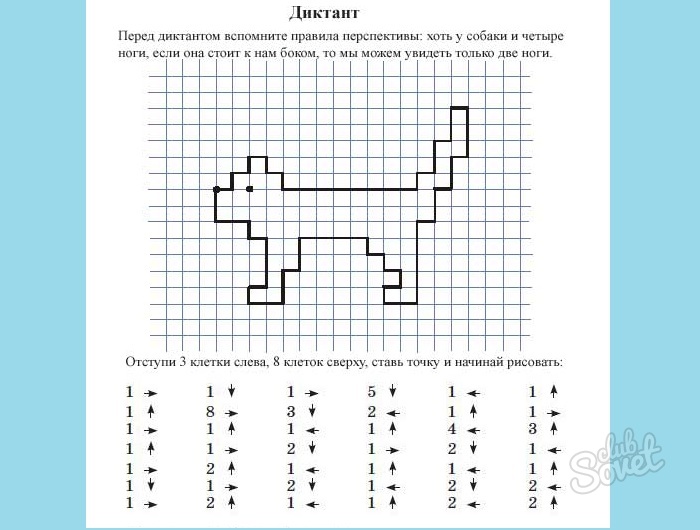Graphic dictation is usually based on the fact that you need to draw one or another picture on a checkered piece of paper, and in a very schematic way. This exercise perfectly develops a preschooler’s imagination and allows him to develop fine motor skills the child’s hands, allows him to orient himself to the sides, remember where right is left, up and down, and also teaches the child how to schematically draw certain drawings.
Graphic dictations can be performed by two children in different ways. The first is that the child is given a ready-made picture and asked to draw exactly the same one. The second method is that the teacher or mother dictates to the child what needs to be drawn and says how many cells and in which direction the pencil should be drawn.
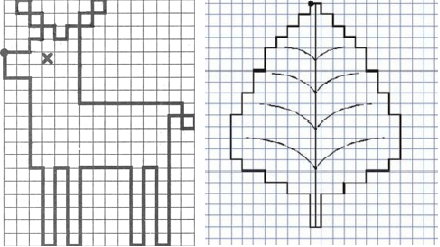
When preparing preschoolers for school, it is imperative to pay great attention to how the fine motor skills of children’s hands develop. If the baby’s hands are developed, then he will already have the necessary brain maturity for speech, thinking and writing to develop in the right direction. Kids who are good with their hands are more understanding and smart. It is precisely for the development of thinking skills, as well as for training fine motor skills of the hands, that graphic dictations for children of primary school age
Such exercises, where you need to draw in boxes, will help teachers and parents prepare their child for school, develop his spelling vigilance, perseverance and attentiveness. If you regularly draw in the cells, then preschoolers will develop spatial imagination, coordination of movements, thinking, attention and memory.
For schoolchildren
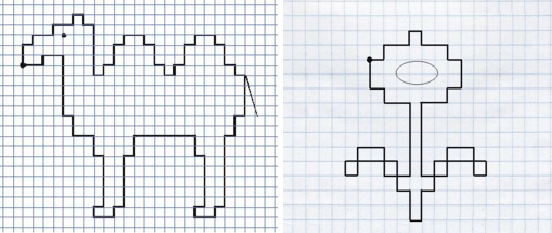
For children of primary school age, you can offer more complex graphic dictations. Such suggestions will be useful if children are already familiar with this exercise and can easily and quickly, and most importantly, without errors, cope with a smaller graphic dictation.
Children should already have a good knowledge of where left is right and up and down, as well as operate with such concepts as point, cell, angle and side. A complex graphic dictation is that the student must not only complete the exercise correctly so that the desired picture appears on the piece of paper, but also do it as carefully and carefully as possible. The teacher can make sure that the whole class listens to his dictation suggestions and draws everything correctly, avoiding inaccuracies and mistakes.
Animals
The squares will be very fun and entertaining with children. To interest kids, talk to them about how animals differ from each other. Try to make suggestions to draw this or that animal, talk with the children about its distinctive features. Then the graphic dictation with animals in the cells will go very well.
We suggest you try to draw a cute little turtle. Let's put a point closer to the left edge of the sheet and draw 2 cells to the right, 4 down, 1 to the right, 2 up, 1 to the right, 1 up, 4 to the right, 1 down, 1 right, 3 down, 1 left, 1 down, 1 left, 1 up, 4 left, 1 down, 1 left, 1 up, 1 left, 3 up, 1 left, 2 up.
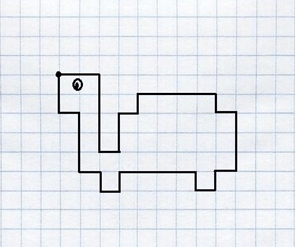
Robot
Children will also find it interesting to draw robots; we offer you a medium difficulty option for drawing a robot by the cells. Remember that children should be in the mood for such work while drawing, and you, as an adult, must support it. There is nothing wrong with the fact that the baby may make a mistake; correct him and give him hints.
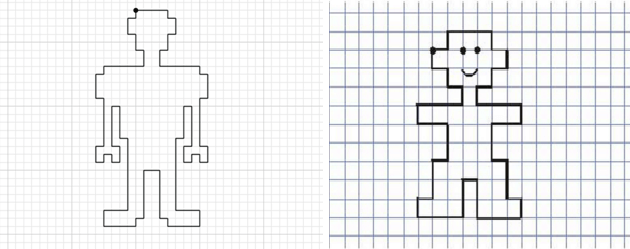
Kangaroo
Most likely, children really like graphic ones and are incredibly amused by drawing in the cells. We offer you a not too sophisticated drawing of a kangaroo and most likely the children will not refuse the offer to draw it.
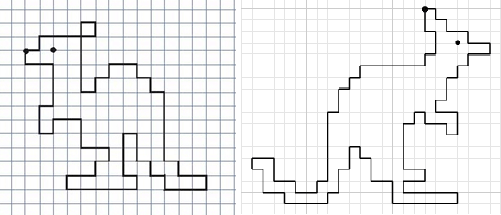
Graphic dictation of a kangaroo
Airplane
Any activities with children should be based on the principle from simple to complex. Take the simplest exercises first and gradually lead the children to more difficult and sophisticated ones. The airplane exercise is considered quite difficult.
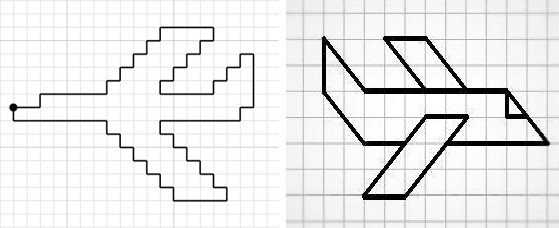
Patterns
Patterns, like no other exercise, help children develop their eye and fine motor skills. Patterns can be both complex and very simple. Try to start with simple ones and end with difficult and interesting patterns.
Graphic dictation 3. draw a ship
Recently, drawing by cells has become not only necessary, but also the most interesting activity for children who are preparing for school and for first-graders. By the way, adults don’t mind drawing with children and learning something new.
Do you know that drawing by cells is not only a fun activity, but also very useful? Especially for 5-6 year old fidgets, for whom it’s time to prepare their hand for writing.
The advantage of drawing by cells
Drawing develops logical thinking, teaches the child to think more comprehensively, teaches not only perseverance, but also improves coordination of movement. This is simply a wonderful activity with preschoolers, because a fun game turns into a useful activity.
To summarize, the advantages of drawing by cells:
- develops thinking and logic;
- trains memory;
- helps the child concentrate;
- teaches accuracy;
- helps train the hand to write;
- develops the eye.
How to learn to draw by cells
For the little ones, special pictures with large drawings have been developed. Each cell is filled with its own color. To draw a figure, you need to go over each cell with a colored pencil. This option is more suitable for children who have just learned to hold a pencil in their hands. A little later, when the child learns to distinguish directions: right-left, up-down, and understands where the right and left corners of the sheet are, you can begin more complex tasks.
It is easy to learn how to draw by cells, especially if the lessons are carried out in game form and pick up easy pictures for beginners.
What you need to learn how to draw by cells:
- Choose a picture that matches the child’s age.
- Explain and show how this is done.
- Offer to draw exactly the same picture so that the child understands what is required of him.
- A little later, you can develop the child’s skills by selecting more complex pictures: for example, show half of the picture and allow the child to complete the missing part.
- The most difficult thing is to learn to perceive tasks by ear and draw from dictation. For example: 2 cells up, cell to the right, 3 cells down or up, and so on.
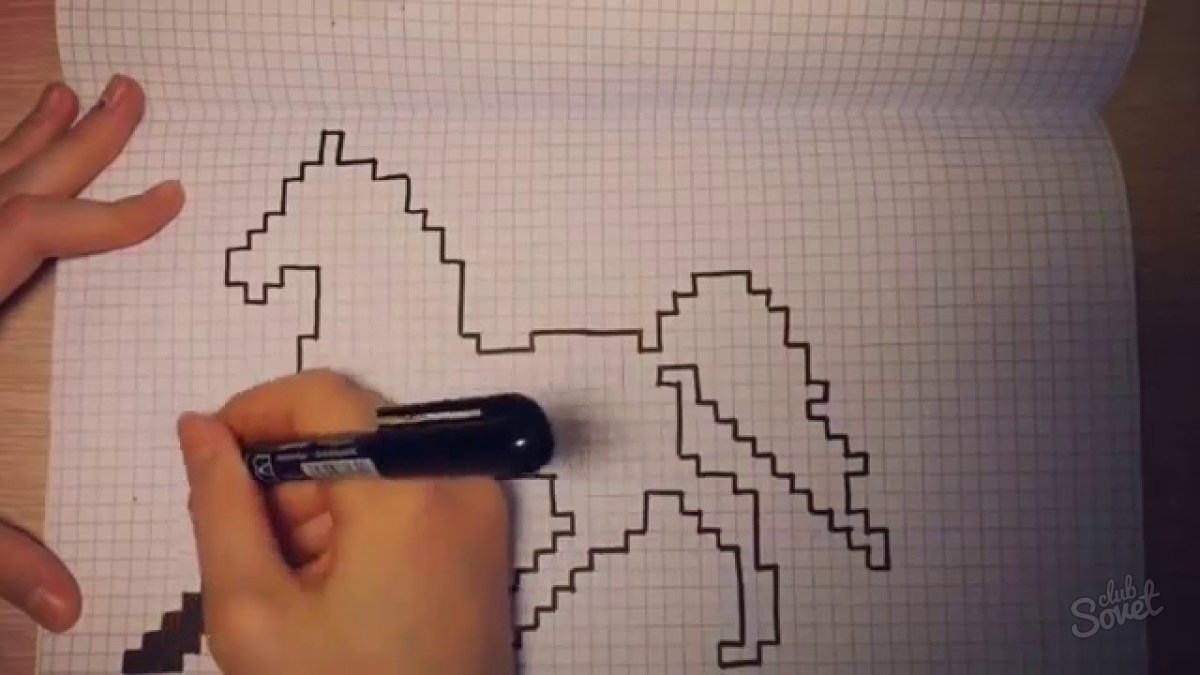
What you need to draw by cells
What to prepare and how to draw by cells:
- For the little ones, it is better to prepare a pack of colored pencils and a checkered notebook, as well as a bright and colorful sample drawn by an adult. Following this pattern, together with the child, you need to move from bottom to top, sequentially filling the free space of the leaf, coloring the cells with colored pencils;
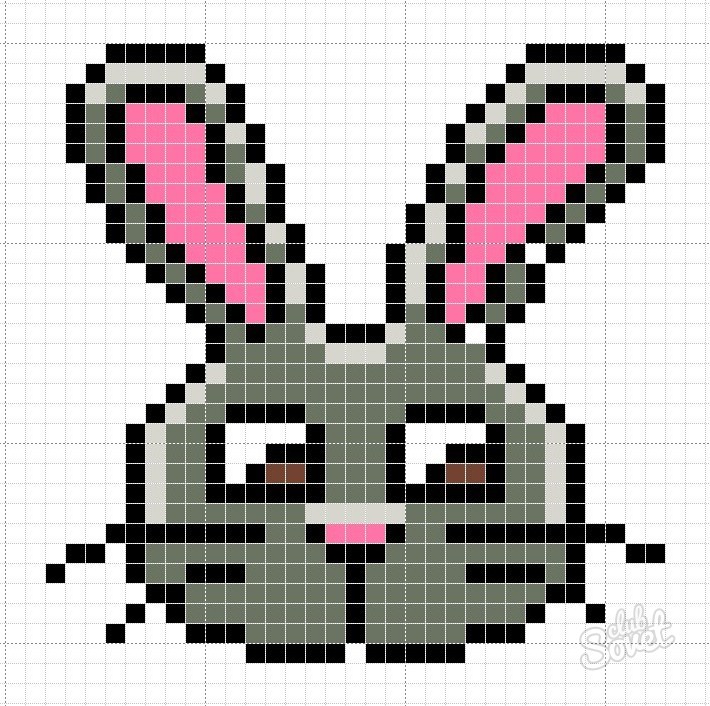
- if you are working with a 6-7 year old child, then give him a pen or a pencil, a checkered piece of paper with half a picture drawn on it. Offer to finish drawing the other half so that you get a picture. It could be something simple: a house, a cat, a bunny, a Christmas tree, a person. It is best to start work from the bottom line, gradually moving up. If you see that a child has made a mistake, tell him and let him correct the mistake immediately. For the future, teach your child to be more attentive and count the cells correctly;
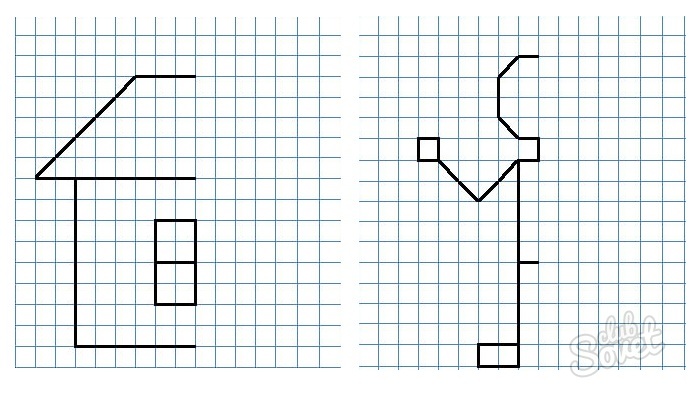
- For school-age children, more complex tasks have been developed, which are called graphic dictations. You will need a pen or pencil and a checkered piece of paper. The adult dictates the terms of the task, the child counts the cells, focusing in the direction. For example, to draw by cells, you need to teach the child to understand the task: the number 1 with an arrow to the right means that you need to move one cell to the right, 2 and a down arrow means that you need to move 2 cells down, and so on.
